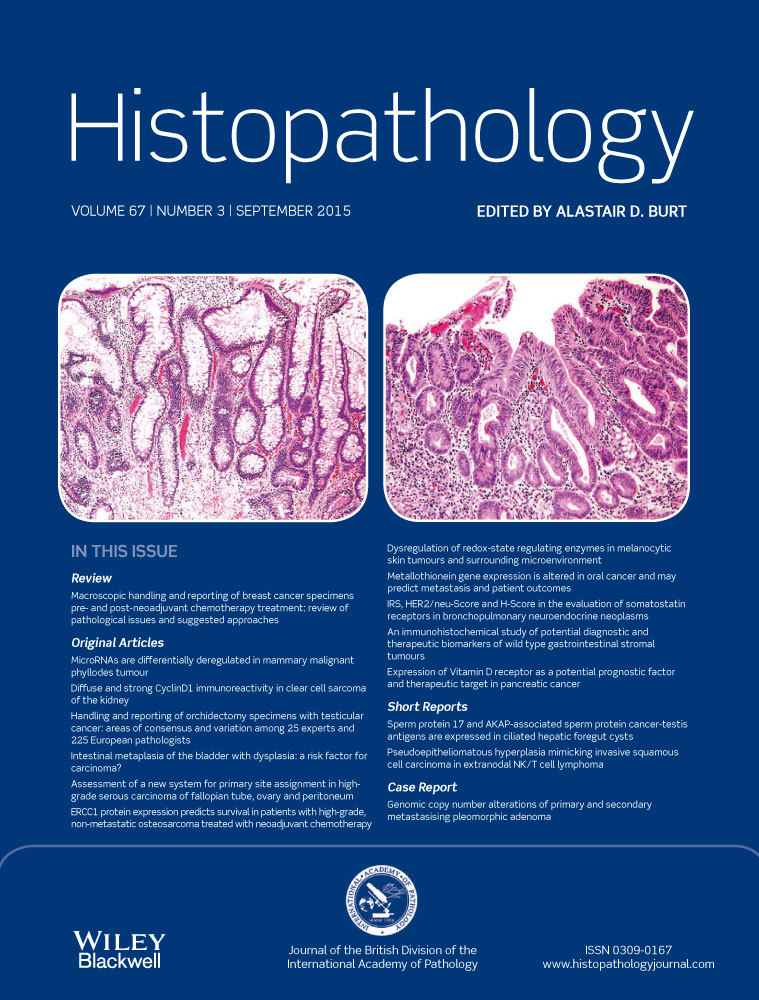Assessment of a new system for primary site assignment in high-grade serous carcinoma of the fallopian tube, ovary, and peritoneum
Abstract
Aims
The available evidence indicates that most non-uterine high-grade serous carcinomas (HGSCs) arise from the fallopian tube (FT), but approaches to primary site assignment have not evolved to reflect this. The aim of this study was to assess the application of recently proposed criteria for site assignment.
Methods and results
One hundred and fifty-one HGSCs from four centres were reviewed retrospectively. Sixty-three of 80 (79%) chemonaive (CN) and 45 of 71 (68%) post-neoadjuvant chemotherapy (NACT) cases were assigned as FT primaries with the new criteria, whereas 58 of 80 (73%) and 45 of 71 (63%) were assigned as ovarian primaries with traditional criteria (P < 0.0001). Of 111 prospectively collected HGSCs, with consistent detailed fimbrial examination, 44 of 53 (83%) CN and 44 of 58 (76%) NACT cases were assigned as FT primaries. The reproducibility of site assignment was tested in a subset of 50 cases: all four reviewing pathologists agreed on the primary site in 48 of 50 (96%) cases, and three of four agreed in 49 of 50 (98%) cases. Of the 53 prospectively studied CN cases, bilateral ovarian involvement (62%) was significantly more frequent than bilateral tubal involvement (12%, P < 0.0001), further supporting a tubal origin and ovarian metastasis in most cases.
Conclusions
With currently accepted protocols, the proposed guidelines are easy to apply and result in consistent site assignment in non-uterine HGSCs. Most cases of non-uterine HGSC were considered to be primary FT neoplasms.




